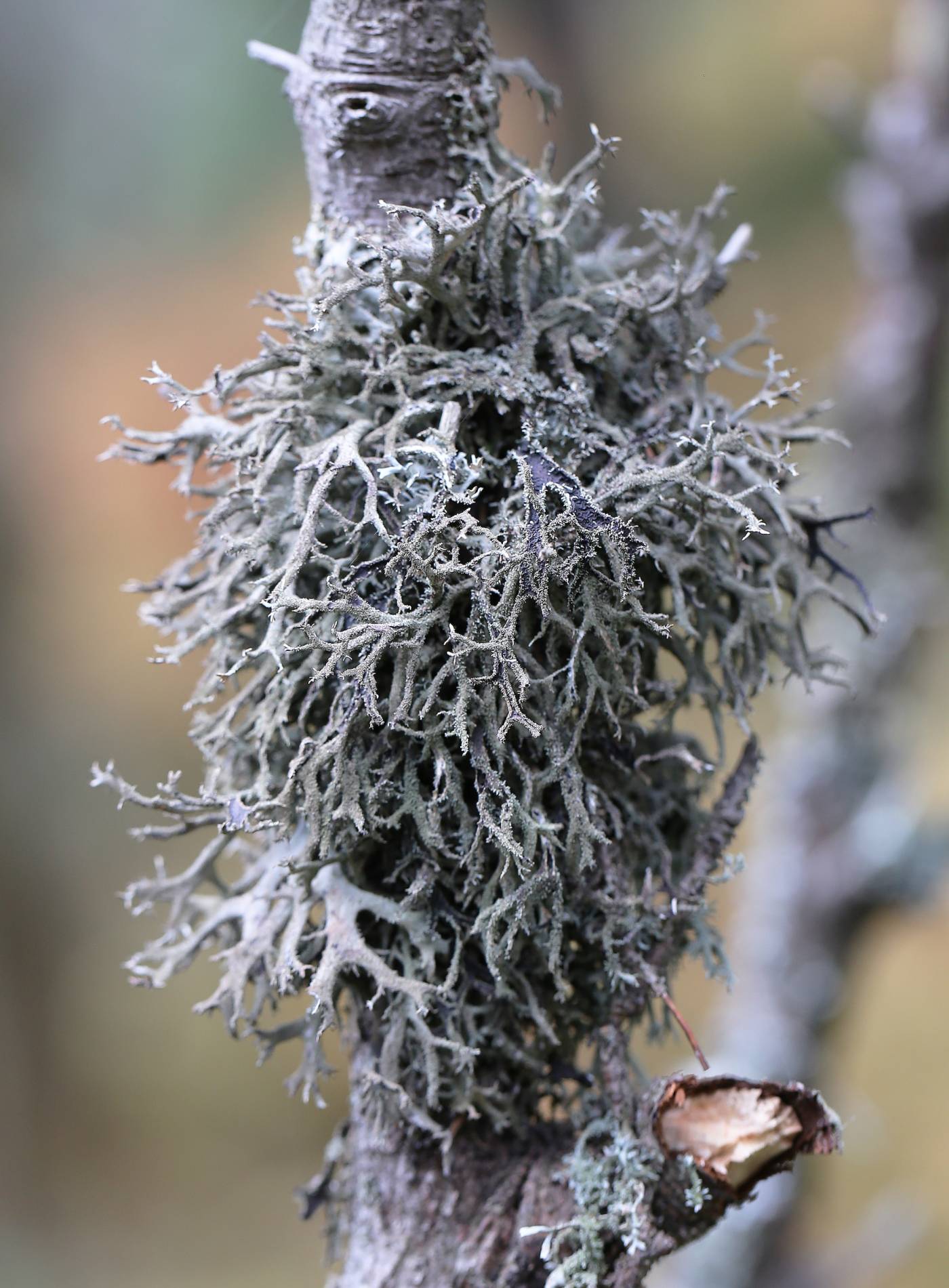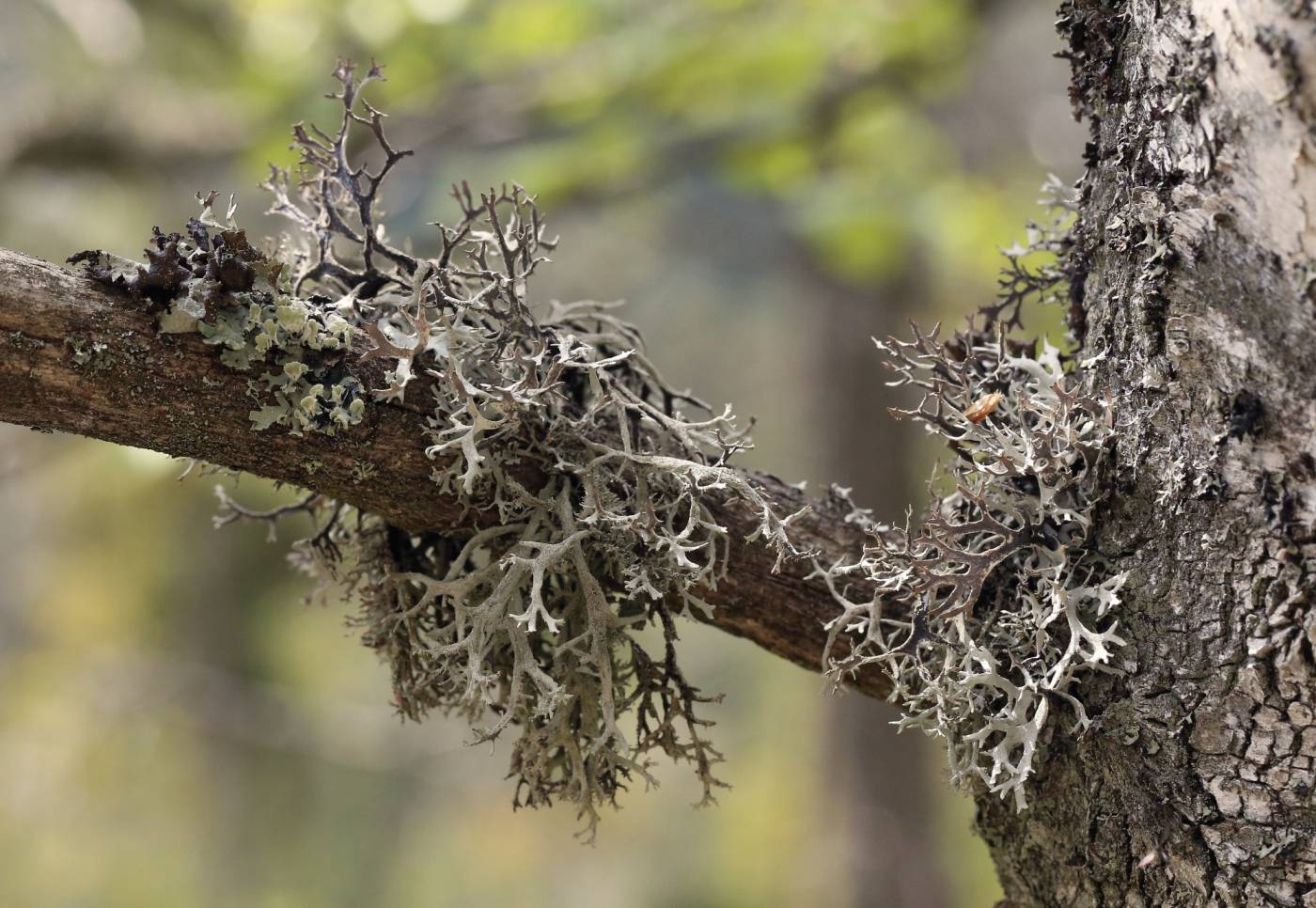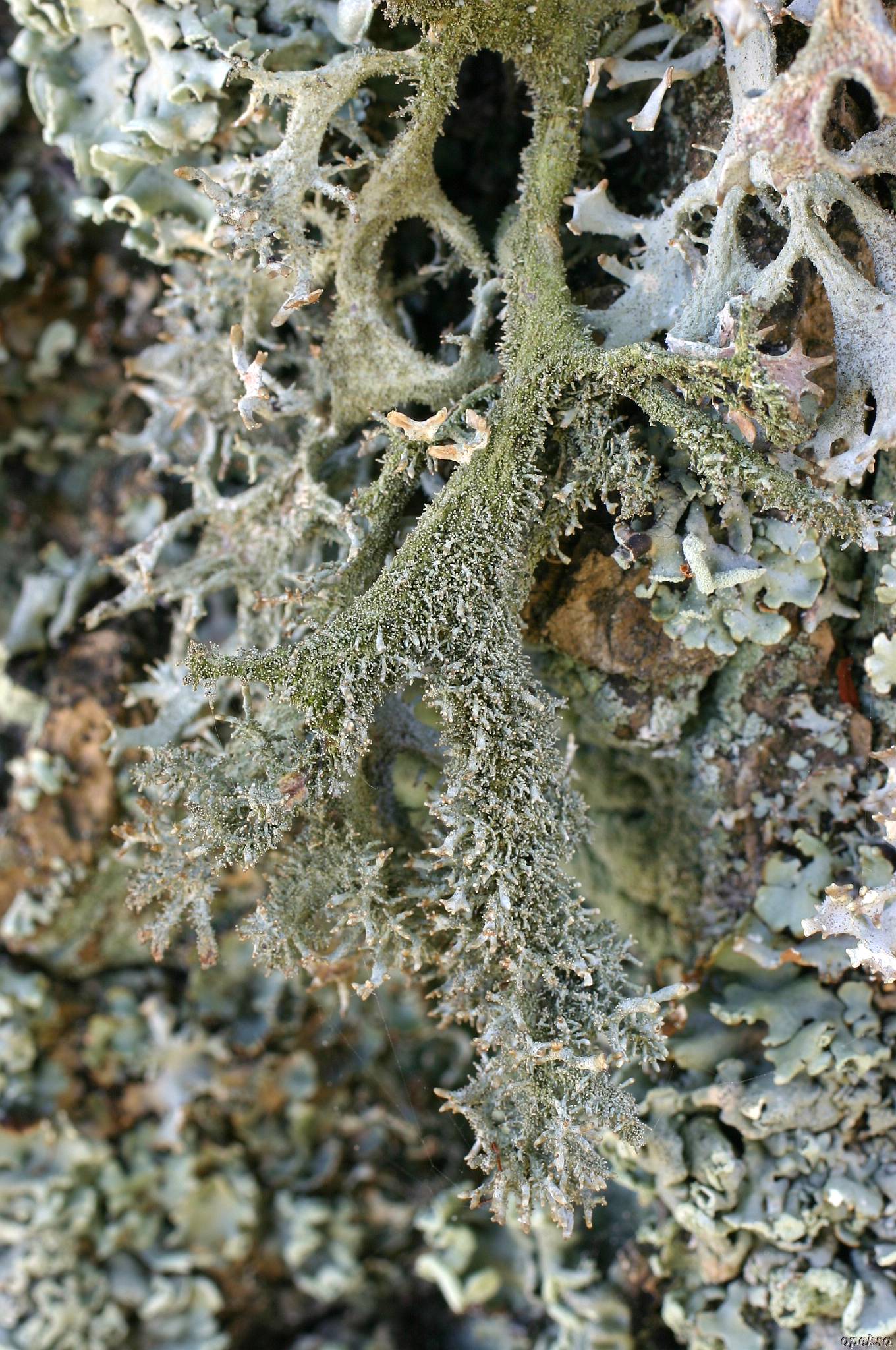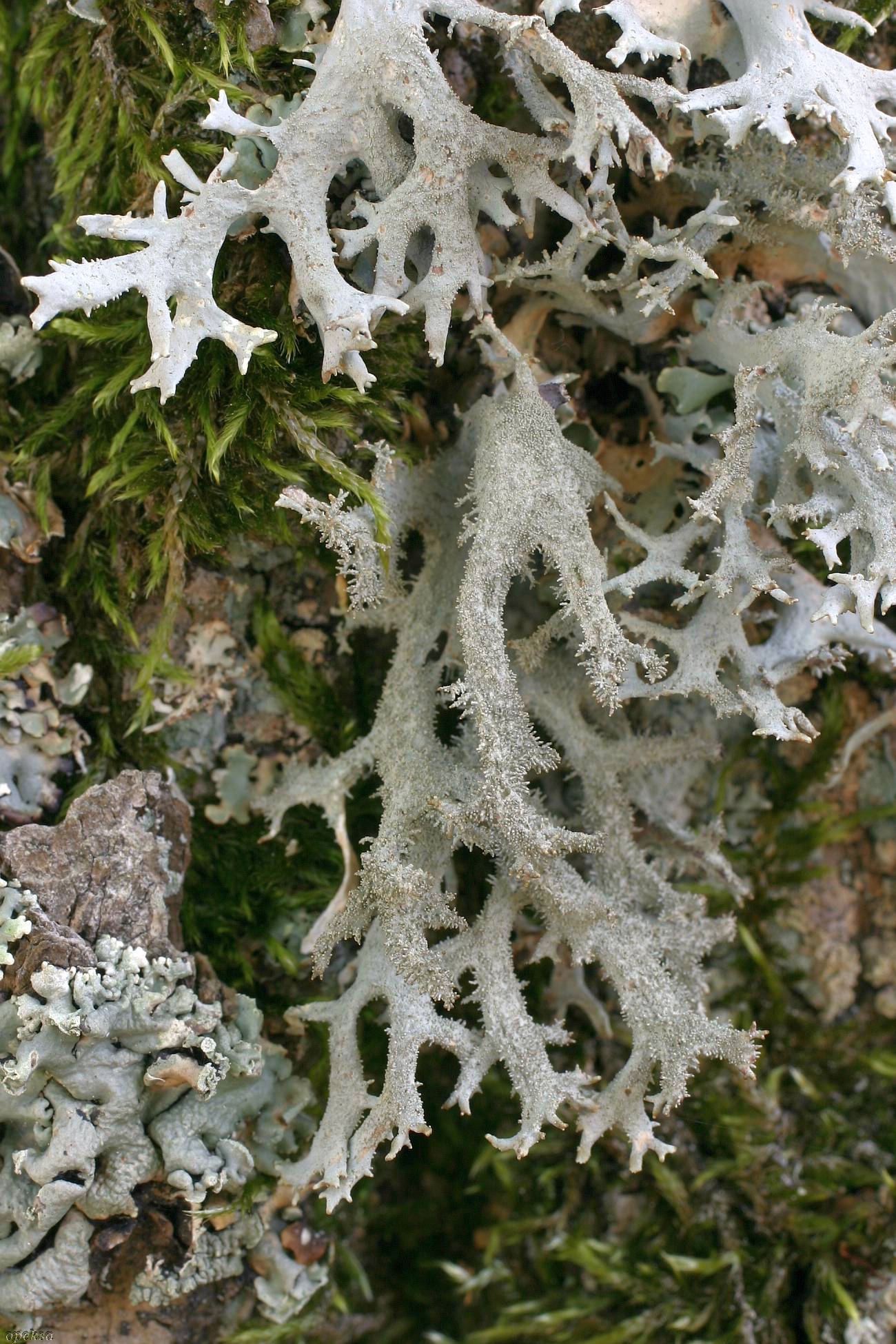One of our most abundant epiphytic lichens, characterized by grey lobes with black underside, usually densely covered with isidia by mature thalli. Very rarely, it forms soralia as well. It occurs from lowlands to mountains on acidic bark of coniferous and deciduous trees, mainly on branches in treetops, both inside and outside of forests. It can also be found on wood (even worked timber) and rarely also on siliceous rocks. Its centre of distribution lies at higher elevations where it is often the dominant species on spruce branches. Its overall distribution includes Eurasia, except of the eastern part, and northern Africa. In certain countries P. furfuracea is commercially used e.g., in cosmetics (the tree moss). Four chemotypes are known. Those with olivetoric acid (medulla C+ red) used to be distinguished as a separate taxon at various levels, e.g. as var. ceratea. Based on a recent study, there is no link between the chemotypes and the phylogeny of the species (Ferencova et al. 2010).
Literature: Ferencova Z., Prado R. Del, Pérez-Vargas I., Hernández-Padrón C. & Crespo A. (2010): A discussion about reproductive modes of Pseudevernia furfuracea based on phylogenetic data. – Lichenologist 42: 449–460.
taxonomic classification:Ascomycota → Lecanoromycetes → Lecanorales → Parmeliaceae → Pseudevernia
Red List (Liška & Palice 2010):LC – least concern
Occurrence in the Czech Republic
All records: 1857, confirmed 1114. One click on a selected square displays particular record(s), including their source(s).




